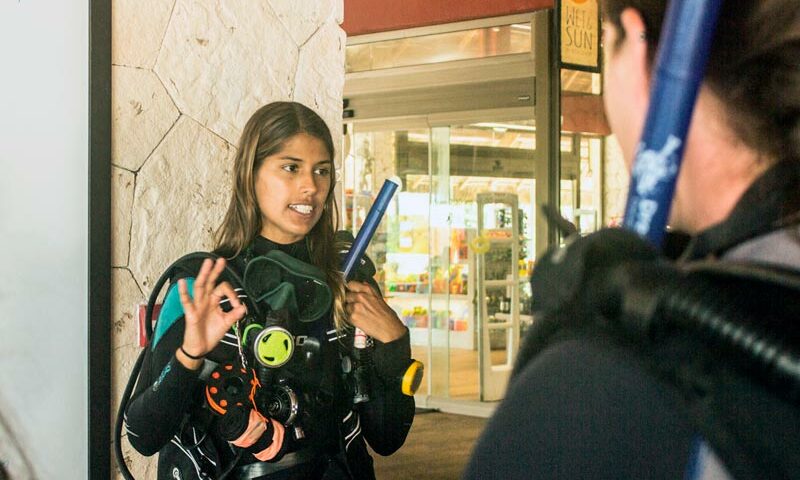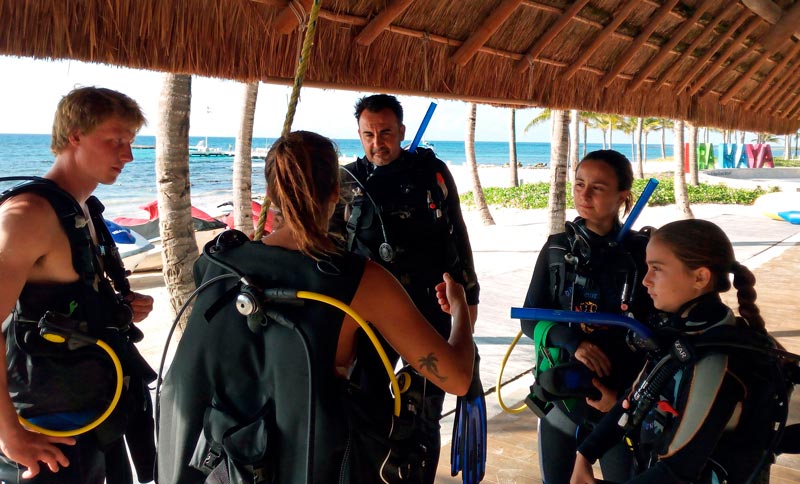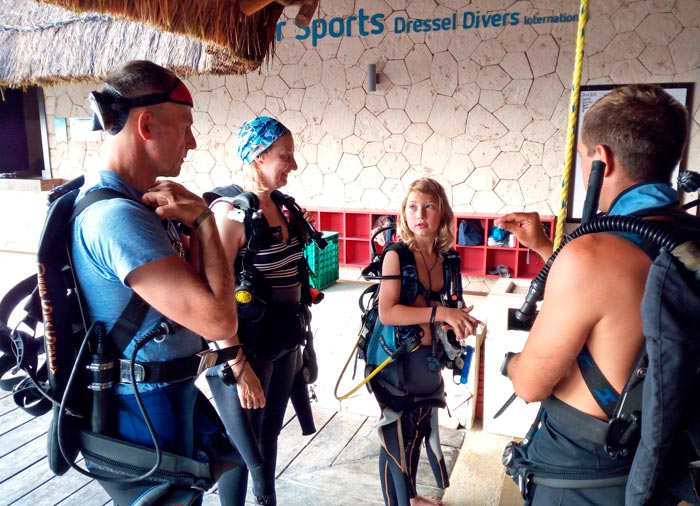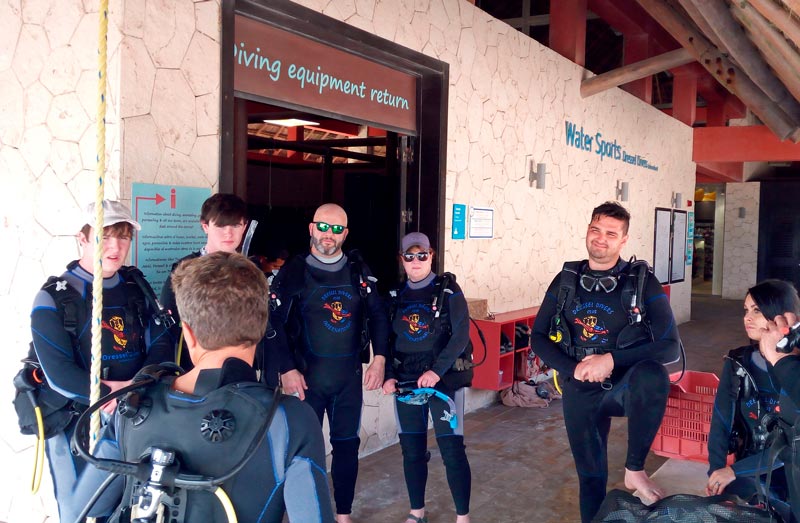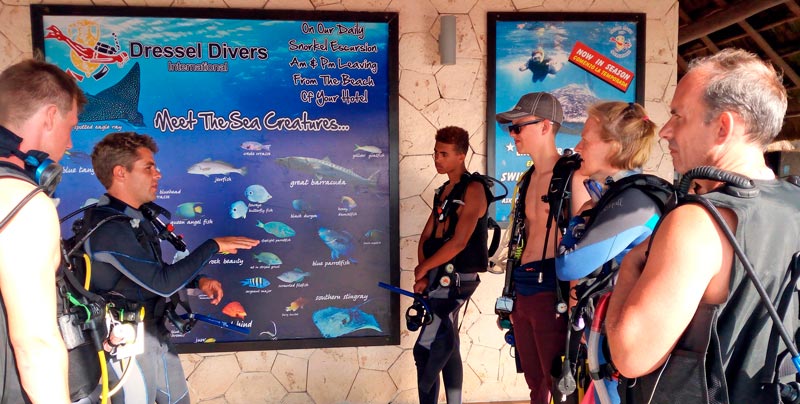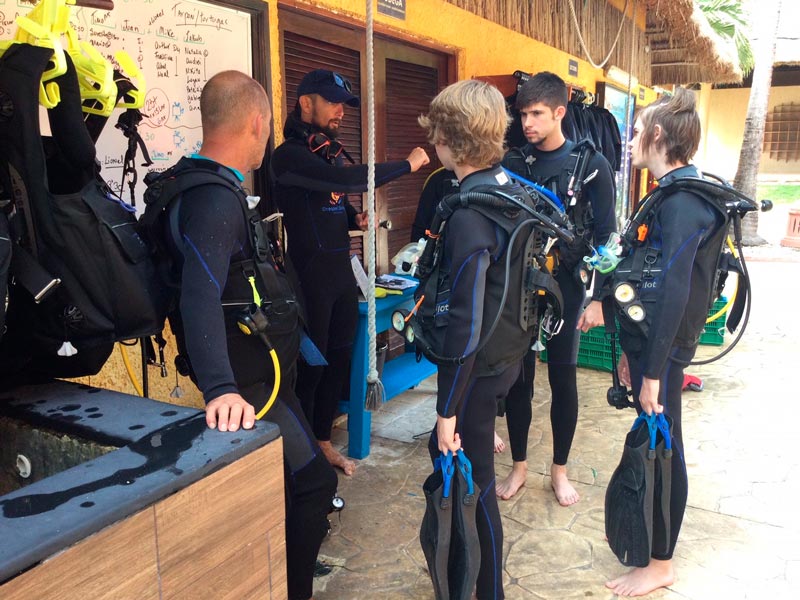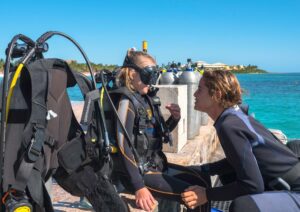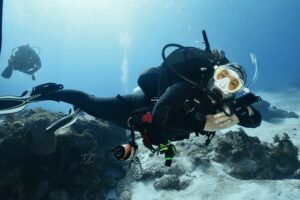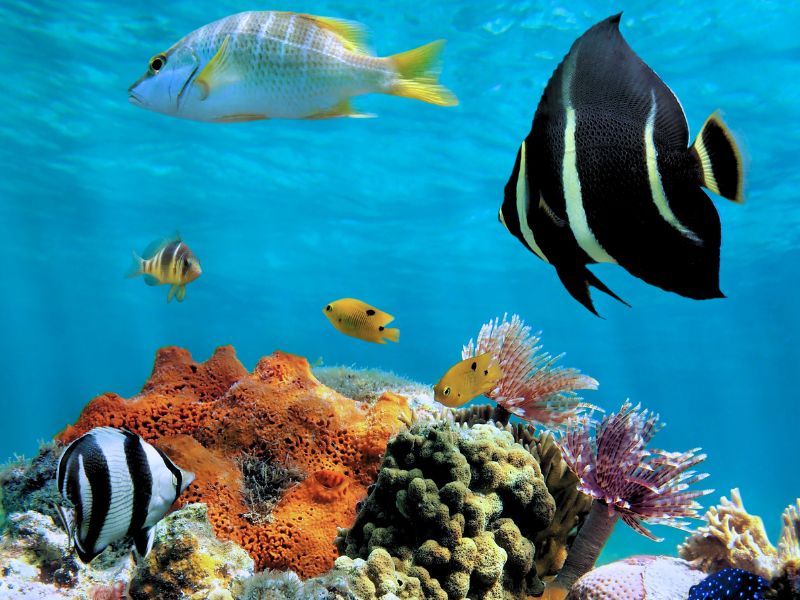3. Your Role
At this point, you will explain where they can find you during the dive and how to identify you.
Knowing this gives divers a lot of peace of mind because they will then be clear about who to follow, where they can find you, and how you will get their attention if necessary.
Example of a PADI dive briefing: Look at me, please. The one in the wetsuit with the blue stripe and the yellow fins, that’s me. I’ll be guiding up front, and I’ll beep this underwater signaling device if I need to call your attention in case of an emergency. Mario, the guy wearing the red neoprene, will close the group.
4. Entry and exit techniques
This point is essential, especially if the dive is from a boat. Dive boat etiquette and protocols are important for comfort also.
Listening to how and when to get into and out of the water reduces the divers’ uncertainty, and stress.
Briefing example: We will board the boat, and before leaving, we will finish assembling the equipment that will be fastened, and leave the fins under the seat. The commute is short, only 10 minutes. Stay seated, to avoid injuries. Don’t worry! I will tell you when you have to approach the stern of the boat. Then, we will make a giant stride into the water.
Once we are all in the water, we will descend slowly, holding on to the guideline…
… when we ascend, the boat will be there to pick us up. Our boats have long ladders that go into the water to make it easier for you to climb up. If needed, you can take off your tank and pass it to the boat staff, so you can climb up the ladder comfortably.
5. Dive Procedures
Now the dive site briefing turns into a diving guide. It is about describing what you are going to do. Some scuba diving procedures are: the direction you will take. If you will use a line to descend, to specify the exact moment when you start the return or explain the safety stop moment.
Always remind them of the importance of monitoring the remaining air, and the buddy system.
Suba Diving briefing example: During the Mama Viña wreck dive, we will circle the vessel 3 times. We will start from the bow and follow the clock’s hands. This is the safest way to take advantage of the current, which is strongest at the bow.
The first lap will be around the hull, where we will surely see some moray eels and schools of Atlantic fish.
The second lap will be around the deck, and we will swim through to visit the bridge, which is easy.
The last lap will be around the tower, from where we will start our ascent back to the surface.
We will be at the bottom for a total of 20 minutes. From time to time, I will give you this signal (and you do PADI air signals) to check your remaining air.
The return to the surface must be done with at least 70 bar / 1000 psi to do it safely, so, check this limit. The ascent will take us 15 minutes, and we will make the emergency stop at 5 meters/ 16 feet depth.




